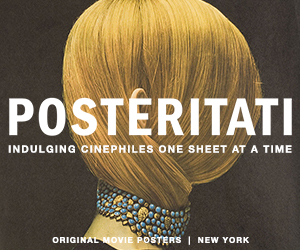A later-career effort from Japan’s Kon Ichikawa, The Makioka Sisters has an extended, pre-credits sequence that’s stunning in its simplicity. Four sisters and one brother-in-law sit at different corners of a tatami mat discussing all sorts of family affairs, from one sister’s marriage prospects to the inheritance left behind by their late parents. In a series of static camera shots that begin with tight, individual close-ups and work their way toward group compositions, Ichikawa and his editor, Chizuko Osada, clearly lay out the difficult emotional terrain that lies before us.
The brilliance of The Makioka Sisters is the way it allows this terrain to shift. The sister who seems to be overbearing in that opening is revealed to have a softer side. The one who appears most sympathetic later betrays an unflattering narcissism. In other words, each character proves to be an infinitely complicated woman whose complications are shaped largely by her place within this family dynamic.
The performances have as much to do with this as the camerawork. Keiko Kishi, as oldest sister Tsuruko, carries her responsibilities as de facto head of the family with a stern air; Yoshiko Sakuma, as the next eldest, Sachiko, lives in a perpetual state of distress, torn between her share of those responsibilities and her closer relationship with her younger, more modern sisters. Sayuri Yoshinaga plays Yukiko, the next in line, and gives her a troublemaking spark. Quiet and demure in dress and behavior, she nonetheless rejects countless suitors who have been arranged for her, exercising her limited power in the only way she can. More outwardly brazen is Yuko Kotegawa as youngest sister Taeko. Modern in dress and dating style—she wears pants and was arrested a few years earlier for “eloping”—Taeko relishes her role in perpetually throwing the family in disarray.
The closest Western corollary to The Makioka Sisters might be a Jane Austen screen adaptation (this is based on a serial novel by Junichiro Tanizaki). Like Austen’s work, The Makioka Sisters often functions as a comedy of manners (especially during a disastrous lunch meeting between Yukiko and a suitor who would rather be studying fish). But it’s also attuned to the ways women, bound by tradition, negotiate a world ostensibly run by men.
The closest Western corollary to The Makioka Sisters might be a Jane Austen screen adaptation.
Set in 1938, the movie also explores a family, indeed a country, stuck between two eras. Sachiko’s house, in particular, is comprised of both traditional Japanese spaces and rooms furnished in a contemporary style. Kimonos are the family business and figure prominently—there is a gorgeous shot of Tsuruko standing amidst her personal collection, setting the screen ablaze in patterns and color—yet you sense that such robes are gradually become curios, rather than necessities.
Indeed, occasional references to Japan’s military campaign in China, including a soldier they encounter on a train, point to an uncertain future. There’s a poignant irony, then, to The Makioka Sisters’ final moments, which find the family, somewhat miraculously, in a place of mutual happiness and contentment. If the ending feels sentimental or perhaps even cheesy (there are elements of soap opera to the picture), it’s worth noting that in a few short years, once World War II comes to its destructive conclusion, life for this family will likely never be the same.



